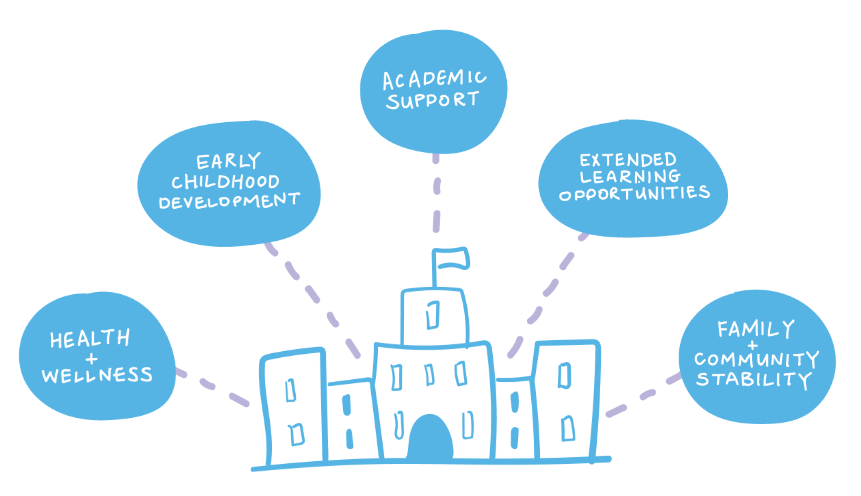A note from Jeremy Mohler of In the Public Interest:
A groundbreaking new studyabout something you’ve likely never heard of might be the biggest education story so far this year.
For the past four years, Rand Corp. has studied New York City’s innovative Community Schools Initiative. It found that, in 113 public schools using the “community school” model, attendance improved, graduation rates increased, and more students passed courses and advanced grades on time.
What’s a community school, you ask? This video from the Learning Policy Institute goes a long way towards explaining. In short, they’re public schools that partner with local communities to create the conditions students need to thrive.
For example, students at the Bronx’s Benjamin Franklin School learn urban farming five days a week. A teacher helps them grow their own vegetables to eat for lunch and take home to their families.
These types of programs aren’t just a fancy New York City thing. Nationwide, there are more than 5,000 community schools.
Pocomoke High School on Maryland’s Eastern Shore pulls together families, home workers from social services, local agencies, and college representatives to build one-on-one relationships with students.
Martin Luther King Jr. Early College, a Denver high school, offers students mental health, dental, vision, and physician services.
The possibilities are almost endless, as long as the school is adequately funded—which is always the elephant in the room in education debates.
Decreasing taxes on corporations and the wealthy is slowly draining money from America’s public education system. The majority of states continue to spend less on education than they did ten years ago.
Fortunately, the growing #RedForEd movement has won not only higher teacher pay but also more funding for more school nurses, smaller class sizes, and more.
And in at least one case—the 2019 Los Angeles teachers’ strike—teachers were able to win promises from the local school district to transform 30 schools into community schools. This has cascaded into support from California Gov. Gavin Newsom, whose recent budget proposal calls for $300 million for community schools statewide.
A just-released poll shows that a majority of likely voters in the 2020 election view public schools positively but think they need more funding. If support for public education continues to grow, community schools might become the rarest thing in public policy: a silver bullet.

For more on education politics and policy in Tennessee, follow @TNEdReport
Your support — $5 or more today — makes publishing education news possible.
